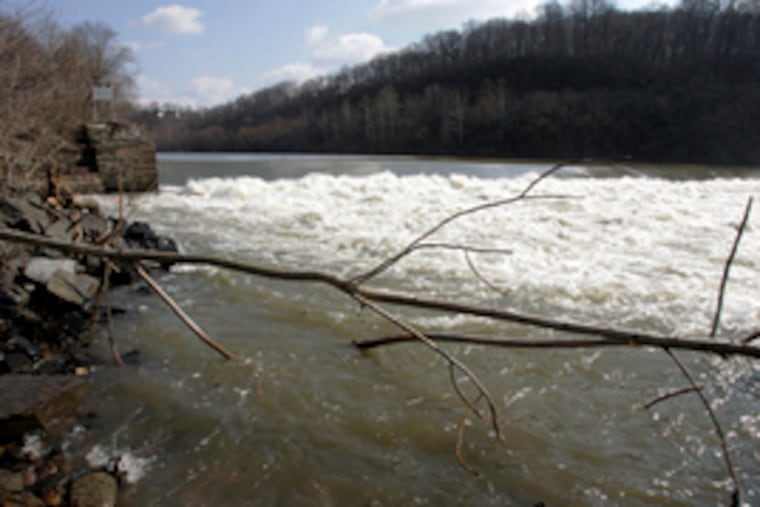High risk dams pose upstream danger for many Pennsylvanians
Pennsylvanians living downstream may not often think about what could happen if something goes wrong with one of its many dams, but threats to life and property line the state's 86,000 miles of streams and rivers.

HARRISBURG, Pa. — Pennsylvanians living downstream may not often think about what could happen if something goes wrong with one of the state’s many dams, but threats to life and property are scattered along the state’s 86,000 miles of streams and rivers.
"Our infrastructure in Pennsylvania is old — we're an old state," said Rich Reisinger, chief of the Dam Safety Division for the state Department of Environmental Protection. "A lot of dams have been around a long time, and occasionally the public gets, I'll say, not as vigilant as we should be, when they say, 'The dam's been there 100 years. It'll be there 100 more.'"
Reisinger's agency regulates nearly 3,400 Pennsylvania dams, of which about 740 are deemed "high hazard," meaning a structural failure is likely to lead to loss of human life. Most of the dams are privately owned and more than half are over 50 years old. Some were even built in the early 19th century.
But the agency's greatest concern is for a group of 145 dams that are rated, in data supplied to the U.S. Army Corps of Engineers, as both high-hazard and in either poor or unsatisfactory condition.
They include the dam at Lake Scranton, first built in 1898 and holding back a 225-acre body of water a couple miles from the city center, and Dehart Reservoir, a 592-acre impoundment constructed in 1940 that supplies Harrisburg's drinking water. The 145 high-risk dams are found in 42 of the state's 67 counties, and on average they were built in the mid-1920s. About half are privately owned, including by businesses, while county, state and local governments own the rest.
A two-year investigation by The Associated Press identified 1,688 dams nationwide that are rated as high-hazard and are deemed to be in poor or unsatisfactory condition.
Pennsylvania's dam safety program has a budget that increased from $2.6 million in 2010 — the third most in the country — to $2.8 million last year, the second-most. It has 28 dam-safety personnel, down slightly from 30 a decade ago.
There have been efforts to mitigate the threat from high-risk dams. Under a decade-old program known as H2O PA, the state has issued 19 grants for unsafe high-hazard dams, funding projects valued at a total of $50 million. Democratic Gov. Tom Wolf's infrastructure proposal would steer additional grant money to upgrade dams.
In September, the Federal Emergency Management Agency provided a grant of $177,000 for the Heller Dam, which helps store drinking water for about 51,000 people in Lycoming County. The Williamsport Municipal Water Authority is using that money to fund engineering work for a project, likely to cost a million dollars or more, to repair spillway walls and install ground water monitoring devices. About 2,600 people in South Williamsport and a neighboring township would be at risk if 44-year-old Heller Dam ever fails.
A May 2008 audit of dam and levee safety by the state auditor general's office found that more than half of the state's high-hazard dams lacked approved emergency plans, which lay out how government will respond and who might be hurt when a dam fails. But Reisinger indicated there has been progress — today only about one in 20 does not have an approved plan.
Efforts to address dam safety in Pennsylvania began slowly after the infamous 1889 Johnstown flood that killed 2,200 people. The disaster was blamed on poor maintenance on the South Fork Dam on the Little Conemaugh River, which sent a 36-foot wall of water roaring into a populated area at 40 mph.
A subsequent flood, caused by the 1911 failure of the Austin Dam in Potter County, wiped out a paper mill and killed 78 people. The state’s first dam safety legislation followed soon after, and lawmakers returned to the topic after the Laurel Run Dam outside Johnstown failed in 1977.